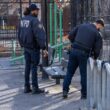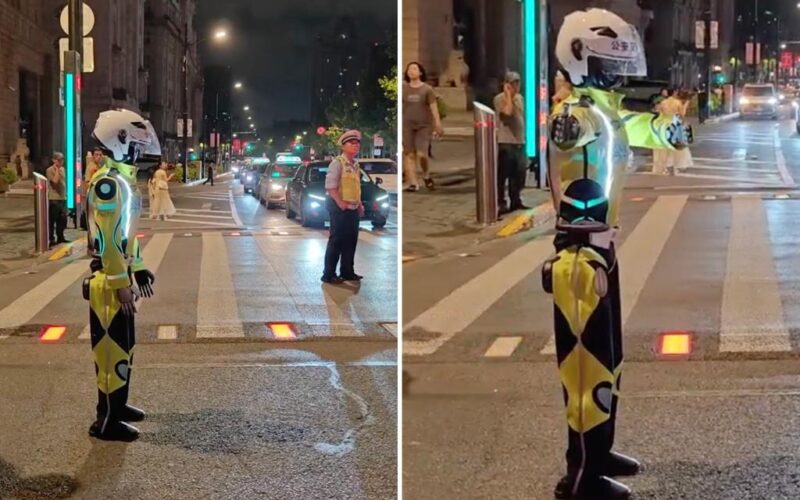It’s not armed, but this “RoboCop” is keeping cars and pedestrians in line on Shanghai’s busiest streets.
A humanoid robot dressed like a police officer manned a busy intersection in Shanghai’s bustling Huangpu District on Wednesday evening — drawing the attention of drivers and pedestrians alike.
During the demonstration, the robot — sporting what looked like an oversize white helmet and a can’t-miss outfit with LED tube lighting and reflective yellow fabric — gave voice instructions to pedestrians.
Those included “Red light, please stop,” and standard hand signals to direct foot traffic across the intersection.
The robot’s physical movements and verbal commands are likewise modeled on traditional traffic policing practices in China.
The appearance of the robot — nicknamed “Xiao Hu” (pronounced “Shyow Hoo”) or “Little Tiger” — marked a trial phase rather than an official deployment, according to the Shanghai Public Security Bureau’s Traffic Management Department.
In addition to directing traffic, Xiao Hu can provide directions to pedestrians and answer basic questions related to traffic laws.
The Shanghai Public Security Bureau’s Traffic Management Department said the robot’s appearance on was part of a “real-world learning exercise for traffic management scenarios.”
Developed over four years, the robot is still undergoing testing. But officials appear eager to eventually use the machines to replace human officers in heavily trafficked areas or during large-scale events.
No timeline has been announced for a broader deployment of the robot, and officials did not comment on whether Xiao Hu or similar machines will be introduced in other districts of the city.
The introduction of Xiao Hu comes amid broader efforts in China to incorporate automation and AI into public safety and governance.
The Shanghai Public Security Bureau said the robot represents “a new technological approach to traffic control,” suggesting that further innovations may be introduced as the city continues to develop its smart city infrastructure.








